
Now available
Gagosian Quarterly Fall 2024
The Fall 2024 issue of Gagosian Quarterly is now available, featuring Andy Warhol’s Mao (1972) on the cover.
Gagosian is pleased to present Beyond Matter, an exhibition of sewn and painted fabric works by Tsuyoshi Maekawa. The exhibition also includes selected works by Alberto Burri, Enrico Castellani, Jorge Eielson, Lucio Fontana, and Piero Manzoni, elaborating a greater global context for Maekawa’s work.
The Gutai Art Association (GAA), formed in 1954 in Osaka, Japan, asserted individual creativity and international outreach following Japan’s wartime isolationism. In relation to Art Informel, Abstract Expressionism, the Dutch Nul collective, and more, Gutai reveals late modernism to be a both global and local network. In 1972, following the death of their cofounder Yoshihara Jirō, members of the GAA gathered to discuss disbanding. Maekawa decided to extend his practice beyond Yoshihara’s imperative “Do what no one has done before!” He continued sewing burlap into intricate waveforms, but instead of focusing on the performative radicality that typified Gutai, his subsequent work reveals a shift to methodical experimentation, using thinner layers of paint and refined tactile effects, such as impressions left in the burlap from his own fingers.
Beyond Matter features thirteen of Maekawa’s post-Gutai works, revealing intricate permutations between tautness and slackness in the stretches and folds of material. For an untitled work from 1977, Maekawa pulled and sewed seven thin striations horizontally through the center of a cotton cloth painted the color of a clear blue sky. The lines end in shadowy pleats, and between them, light washes of pink, red, green, and blue appear and disappear like a passing fog. The gradations are as elusive as a sunrise or sunset, yet Maekawa has combined them with the concreteness of his stitching. An earlier untitled work from 1975 features an undulating line painted in an ochre hue that fades into the murky gray of the field. Along the sloping sides of the swelling wave, turquoise and violet undertones emerge. Some works are composed of several burlap panels, tiled or stacked. Cryptographic folds become indecipherable symbols, and the intersection of smooth cotton and rough burlap evokes the variable surfaces of landscape.
Maekawa’s artistic output from this period shows that he succeeded in moving beyond Gutai after its dissolution. The works chosen in response to this development bear relation to Maekawa’s material manipulations. From Italy, Castellani and Fontana, who exhibited their own work at the Gutai Pinacotheca, reimagined the surface of the canvas through wrapping and slashing. Burri combined burnt, ripped, and scraped textures, while Manzoni brought sculptural elements to the canvas, stacking kaolin tiles and weaving thick fabric bands across wooden stretchers. Similarly, the Peruvian-born artist Jorge Eielson draped and cinched his canvases diagonally across their supports. To consider these works alongside Maekawa’s points to the rich complexity of the global artistic network whose aim was to break the boundaries of the painted surface.
A fully illustrated catalogue with an essay on Maekawa’s work by Barbara Bertozzi Castelli will accompany the exhibition.

The Fall 2024 issue of Gagosian Quarterly is now available, featuring Andy Warhol’s Mao (1972) on the cover.
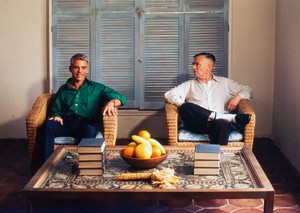
Katherine Bucknell, previously the editor of a four-volume edition of Christopher Isherwood’s diaries, has now published Christopher Isherwood Inside Out, an intimate and rigorous biography of the celebrated writer and gay cultural icon. Here she meets with Josh Zajdman to discuss the challenges and revelations of the book.
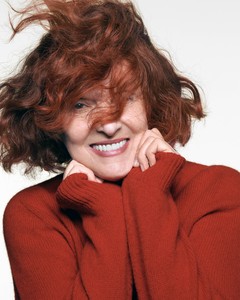
Grace Coddington, fashion editor and former creative-director-at-large for American Vogue, meets with the Quarterly’s Derek C. Blasberg to reminisce on some of her most iconic collaborations with photographers and artists.
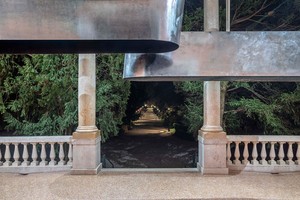
Architect and designer Jayden Ali joins Gagosian associate director Péjú Oshin for a conversation about false notions of failure, four-day workweeks, and the connective power of building together.
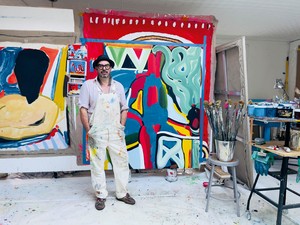
Old friends chat about their love of music, nightclub paintings, life lessons from aikido, and Spencer Sweeney’s upcoming exhibition The Painted Bride, at Gagosian, New York.
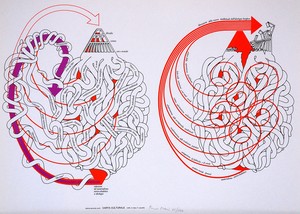
The exhibition Enzo Mari, curated by Hans Ulrich Obrist with Francesca Giacomelli at the Design Museum, London, runs through September 8. Taking a cue from this major retrospective, Bartolomeo Sala delves into Mari’s practice and convictions.

The Warp of Time celebrates a hundred years of shared history between the Old Carpet Factory, a historical mansion located on the Greek island of Hydra, and Soutzoglou Carpets. Here, Salomé Gómez-Upegui interviews curator Ekaterina Juskowski about Helen Marden’s woven works within the context of the exhibition, touching upon themes of history, memory, and creative expression.
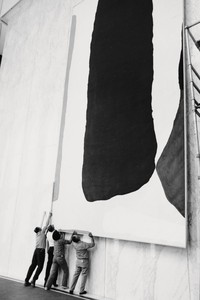
John Elderfield and Lauren Mahony of Gagosian speak with the National Gallery of Art’s Harry Cooper about the new and expanded version of Elderfield’s 1989 monograph on Helen Frankenthaler that Gagosian, in collaboration with the Helen Frankenthaler Foundation, will publish this summer. The conversation traces Elderfield’s long interest in Frankenthaler’s work—from his time as a young curator at the Museum of Modern Art, New York, to the present—and reveals some of the new perspectives and discoveries awaiting readers.
In conjunction with the memorial service for Brice Marden held at the Museum of Modern Art, New York, Mirabelle and Melia Marden produced a short film directed by Chiara Clemente to honor the late artist. Featuring interviews, archival photographs, and family videos, this film captures Marden’s vibrant life and enduring cultural impact.

Sydney Stutterheim has published Artist, Audience, Accomplice: Ethics and Authorship in Art of the 1970s and 1980s (Duke University Press, 2024), a survey of performance art and related practices that involve, in various manners, the figure of the accomplice. To celebrate the publication, the Quarterly is publishing an excerpt that examines Chris Burden’s Deadman (1972).
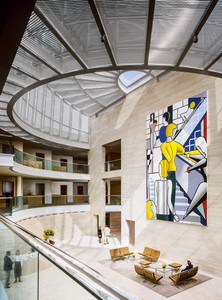
Michael Ovitz, cofounder of Creative Artists Agency (CAA), looks back to 1989, the year he and the architect I. M. Pei commissioned Roy Lichtenstein to create the Bauhaus Stairway Mural for the then new CAA Building in Los Angeles. Through the experience of working with Lichtenstein, Ovitz formed a meaningful friendship with the artist.
Join Gagosian for a conversation between director, producer, and writer Sophia Heriveaux and actor, director, and writer Roger Guenveur Smith inside the exhibition Jean-Michel Basquiat: Made on Market Street, at Gagosian, Beverly Hills. Heriveaux and Guenveur Smith both share a personal connection to Basquiat: Heriveaux is the artist’s niece and Guenveur Smith was one of his friends and collaborators. The pair discuss Basquiat’s work and legacy, as well as his lasting impact on contemporary art and culture.